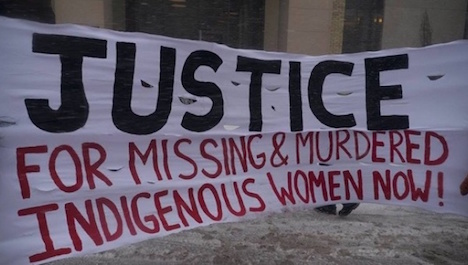With Canada’s launch of a long-awaited inquiry into nearly 1,200 missing or murdered Indigenous women, a new analysis by the Toronto Star rebuts a common perception that the vast majority of the slain women were in relationships with their killers. The finding is based on the Star’s review of publicly available information on more than 750 murder cases, of which 224 remain unsolved. The Star’s analysis found that 44 percent of the women were victims of people they barely knew. Relying on newspaper clippings, as well as court documents, the Star’s database included 1,129 names, dates and, if a case was solved, some information on the offenders. Their review found 420 cases where details of the relationship between the women and their offender was known. Of those, the study found that only half of the victims were domestically related to the perpetrator, in either family or partner connections. More specifically, they found that 16 percent of the offenders were acquaintances, 15 percent were strangers and 13 percent serial killers. Alberta’s Cold Lake First Nation Chief Bernice Martial has from the start not believed that most Indigenous women knew their killers and that they were mostly Indigenous men. “I want the facts. I want the data. I want to see proof,” she told the Star. Assembly of First Nations National Chief Perry Bellegarde also wants police to change the definition of “known-to” in their reports, which as of now can include anything from spouses, relatives, “close friends, neighbors, authority figures, business relationships, criminal relationships and casual acquaintances.” “It could be the corner store grocery man, or whoever brings milk to the door. It doesn’t necessarily mean the boyfriend,” Bellegarde says. “You need to break this down further and define it. The way you looked at it, only 50 per cent are in relationships. If the RCMP said it was 90 per cent—well, there is a discrepancy already. It is alarming—the transparency and openness.” The discrepancy between the RCMP’s report and other findings, including the Star’s, is important because it shapes public perception of both the victims, and their assailants. In April of this year, then Aboriginal Affairs Minister Bernard Valcourt told First Nations chiefs that, in at least 70 percent of the cases of murdered and missing Aboriginal women, Indigenous men had been the perpetrators. But that notion feeds a racialized narrative that the women are complicit in their own deaths, when there are concerns that they are in fact being preyed upon by men outside their communities. “The notion of First Nations women only being killed by their boyfriends and spouses is a myth,” said Grand Chief Alvin Fiddler of Nishnawbe Aski Nation, which represents 49 northern Ontario First Nations. Carolyn Bennett, the new Indigenous and northern affairs minister, said she was “appalled” by Valcourt’s remarks. “It was misleading for him to characterize it that way and I, at the time, was furious,” Bennett told The Star. Most homicides that involve female victims of all ethnicities do occur because of family or intimate partner violence, the Star reported, but the rate is actually lower for Aboriginal women—62 percent compared to 74 percent for non-Aboriginal women. “This all speaks to the bigger realm of why there needs to be an inquiry coupled with an action plan,” RCMP Commissioner Bob Paulson said. Bennett, who is on the five-member panel establishing the national inquiry, said cases that do involve family violence should be viewed through a wider lens. “We’ve got to go way back upstream to actually look at the effects of colonization and residential schools on the Indigenous population in Canada,” Bennett said. To review the Star’s detailed findings click here. Source URL |
